Listen to The SaaStrophe Stories
Do you prefer reading or listening? If it’s reading, scroll a little bit down and choose a story, and if it’s listening, then here you go:
Table of Contents
- The SEO Horror Recipe
By Alexis Trammell, CGO at Stratabeat
What happens when the marketing team is tasked with getting traffic at all costs. - What Could Possibly Go Wrong?
By Drew Brucker, Fractional Marketing Leader & AI Creative Consultant at Brainchild
How an awesome influencer campaign can turn into a complete disaster with just one sentence. - A Dark Mode for a Webinar
By Michal Leszczynski, Head of Content Marketing & Partnerships at GetResponse.com
What happens when you decide to host a webinar from the office to be 100% sure everything is fine. - You’re Kidding, Right?
By Tim Hanson, CCO at Penfriend.ai
You’ve planned the product launch meticulously. What could you possibly have forgotten? - The Case of the Phantom Leads
By James Gregg, Founder at Search Click Boom
A short horror story about the expectations vs. the reality of a $72k paid search campaign. - The Joke That Got Too Real
By Tom Winter, Co-founder and CGO at seowind.io
When sales and marketing sell a little more than the product can actually handle. - Where Are The Leads?
By Iris Dings, Sr. Content Marketing Manager at Unmuted
We need more leads! No, not these leads! - The Process Nightmare
By Laura Erdem, Sales Manager – Americas at Dreamdata
When you’ve agreed on everything about the deal and suddenly realize that’s just the beginning. - Marketing in the Dark
By Olena Bomko, Marketing Advisor for Tech Startups
Hey, Chief Marketing Officer, when did you last speak to our customers? Wait, what? Say it again… - The Silent Fall and the End of Ads
By Adam Holmgren, Co-Founder at Fibbler
We’ve proven that LinkedIn ads don’t bring any leads, let’s cut them. Wait, what happened to our pipeline? - The Dirty Data
By Georgi Furnadzhiev, Growth Marketing Manager at The Growth Syndicate
When you bet everything on one ABM campaign. - The Campaign That Could Have Lived
By Yulia Olennikova, CMO at N.Rich
A short reminder about the concept of the attribution window—and what it can do to your campaigns. - The AI Marketing Assistant That Wasn’t
By Xan Mannekens, Fractional CMO
The heart-wrenching story of accidentally launching a feature that didn’t exist. - The $40k Email Nightmare
By Jacalyn Beales, Head of Lifecycle at Copy.ai
Turns out, an email campaign can accidentally cost $40k.
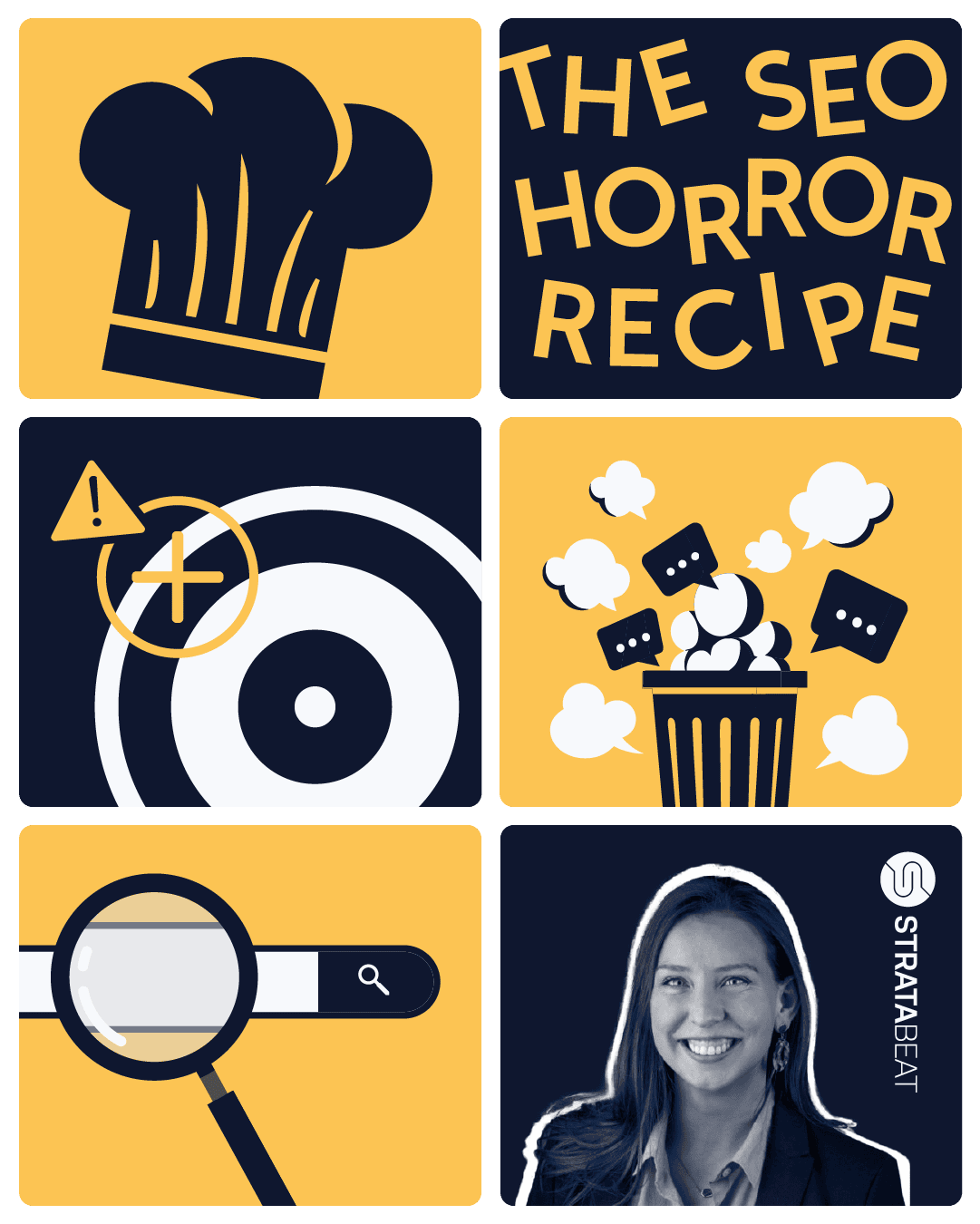
The SEO Horror Recipe
Imagine a company where the marketing team is hustling like there’s no tomorrow, giving it everything they’ve got to hit their goals. They’re doing an awesome job, right? Here’s the terrifying twist: nobody checked if those goals actually lined up with the company’s goals. And marketing? They’re full throttle… but in the completely wrong direction.
We ran into this nightmare a few years back. One of our SaaS clients had thousands of web pages pulling in a mountain of organic traffic. Sounds like a dream, right? Well, if your marketing goal is just to drive traffic, sure, that’s great.
But here’s the kicker.
Those pages? They had literally nothing to do with their SaaS products. Zilch. Nada. Instead, they were… meal recipes. Yes, you read that right. Recipe after recipe, doing absolutely nothing to help their business. In fact, they were only tanking their authority!
The wild part? After we deleted thousands of these irrelevant pages, their organic traffic barely dipped. Why? Because Google finally had a clue what the site was actually about: SaaS products, not soufflés.
Lesson learned: Deleting thousands of pages may sound like a horror story, but when your traffic is coming from pudding enthusiasts and cake connoisseurs, it’s not doing your SaaS any favors. It’s the quality and relevance of your content that counts, not how many dessert lovers you’re attracting.
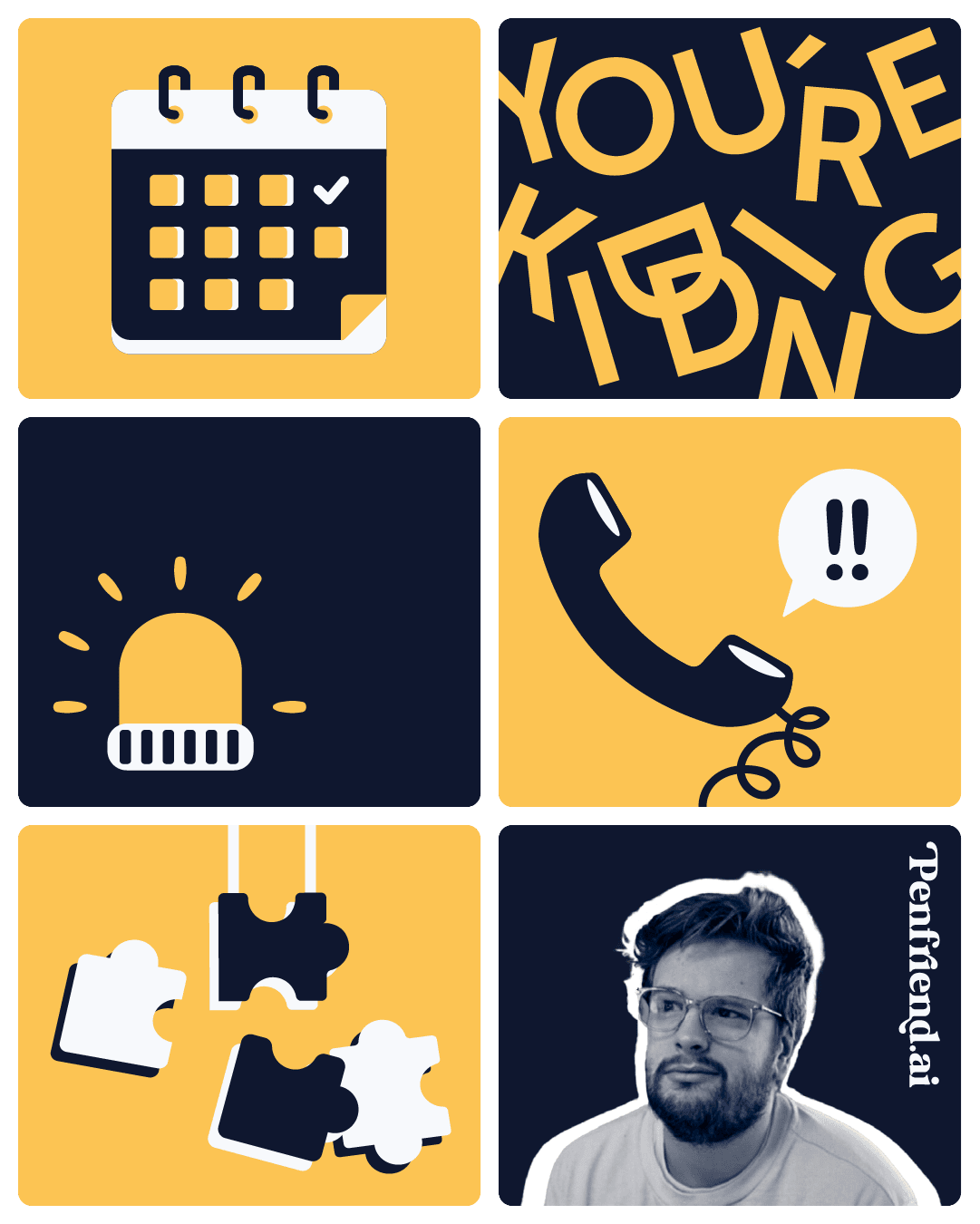
You’re Kidding, Right?
We were deep in the trenches of launch mode, the kind where every waking moment is consumed by thoughts of success. Will people like what we’ve built? Penfriend v1 was nearly ready, our audience primed, and our marketing was in overdrive. The FoMO machine was in full swing—posts on LinkedIn were buzzing, emails flying out, each one more urgent than the last, all building up to launch day.
We’d engineered a full countdown of events, each one carefully choreographed to ramp up the anticipation. Every detail had been meticulously planned. Or so we thought.
It was during a routine call with the dev team—just a regular check-in, nothing special—when the world suddenly shifted beneath us. I was chatting with our lead developer, going over some minor bugs that needed fixing, when I casually mentioned the launch date. “Just making sure everything’s on track for next week,” I said, not thinking much of it.
There was a pause on the other end of the line. A long pause. The kind of pause that makes your heart skip a beat.
“Next week?” the lead developer finally asked, his voice laced with confusion.
“Yeah, the launch,” I replied, a knot beginning to form in my stomach. “Next Friday. You know, the big day.”
Another silence. This time, it was more like the calm before a storm.
“We didn’t know,” he said, his voice flat.
I felt my blood run cold as the weight of his words hit me. My mind raced, trying to process what I’d just heard. How could this have happened? How could we, the founders, have missed something so crucial?
The room seemed to shrink, the air growing heavy with the realization of what we’d done—or rather, what we hadn’t done. We had failed to communicate the most critical piece of information to the people who mattered most.
With just 11 days to go, I scrambled to find the words, but all I could manage was a feeble, “You’re kidding, right?”
But there was no joke here. This was real. This was a nightmare unfolding in broad daylight.
Panic set in. I immediately called the other two founders, both of whom were in London, hundreds of miles away but somehow still close enough to feel the dread that was now coursing through me. The phone rang, once, twice, then a hurried “Hello?” on the other end.
“Hey,” I said, trying to keep my voice steady. “I think we screwed up. We, err, we didn’t tell the developers we want to launch next week…”
The silence on the other end was deafening. I could almost hear their minds whirring, trying to grasp the enormity of what I’d just said.
Finally, one of them spoke, his voice tinged with disbelief. “So, we’ve been hyping this launch to everyone, and the dev team doesn’t even know?”
“Yup, pretty much,” I replied.
And so began the scramble. A mad dash to re-align everything that had so carefully been put in place. The launch date had to be pushed back—no question about it. We tore apart our marketing plan, redoing a big chunk of it, crafting new messaging that would make sense given the delay. Every piece of content had to be rechecked, re-timed, re-sent.
But the most important step? Making sure the dev team knew the new date. This time, we weren’t taking any chances. We looped them in on every single detail, over-communicating to the point where they probably wished we’d stop reminding them.
In the end, we managed to pull it off. The launch was successful, the product well-received, and our audience knew every bit of the hiccup. So now, I can tell this story almost without any changes to my heart rate.
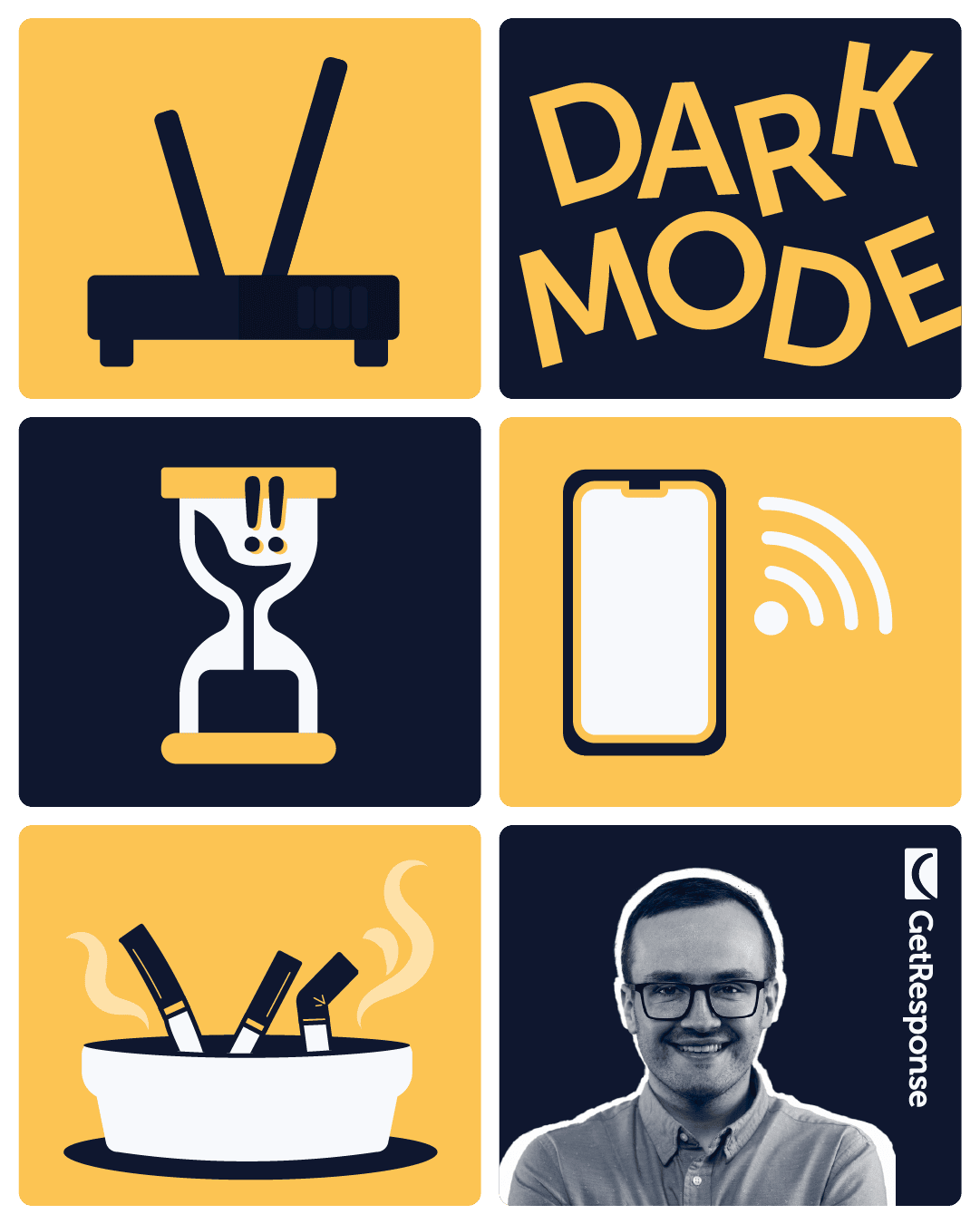
A Dark Mode for a Webinar
Several years back, we were running a webinar with a partner. This was one of those events where you run a campaign for two weeks, invite a couple of hundred folks, and ensure everything goes smoothly. It should go smoothly, right?
The partner was connecting from another city, but we decided to host it from our HQ to ensure there were no technical issues. Everything started off well—we did the intro and passed the mic to the partner.
A few minutes later, the internet went down in the whole office block.
With our hearts pounding, we tried to figure out a solution to get us back online. Luckily, after about 10 minutes, one of the developers sitting next to us casually showed us how to turn on a hotspot on our phone (yes, we were that nervous).
We got back online and found the partner was still presenting, but people were joking in the webinar room that we must have gone out for a smoke or something.
Truthfully, the audience was understanding. Still, it must have been the most stressful event I’ve ever experienced at work.
On the bright side, I now rarely stress over doing live presentations, as there’s little that can surprise me anymore 😀
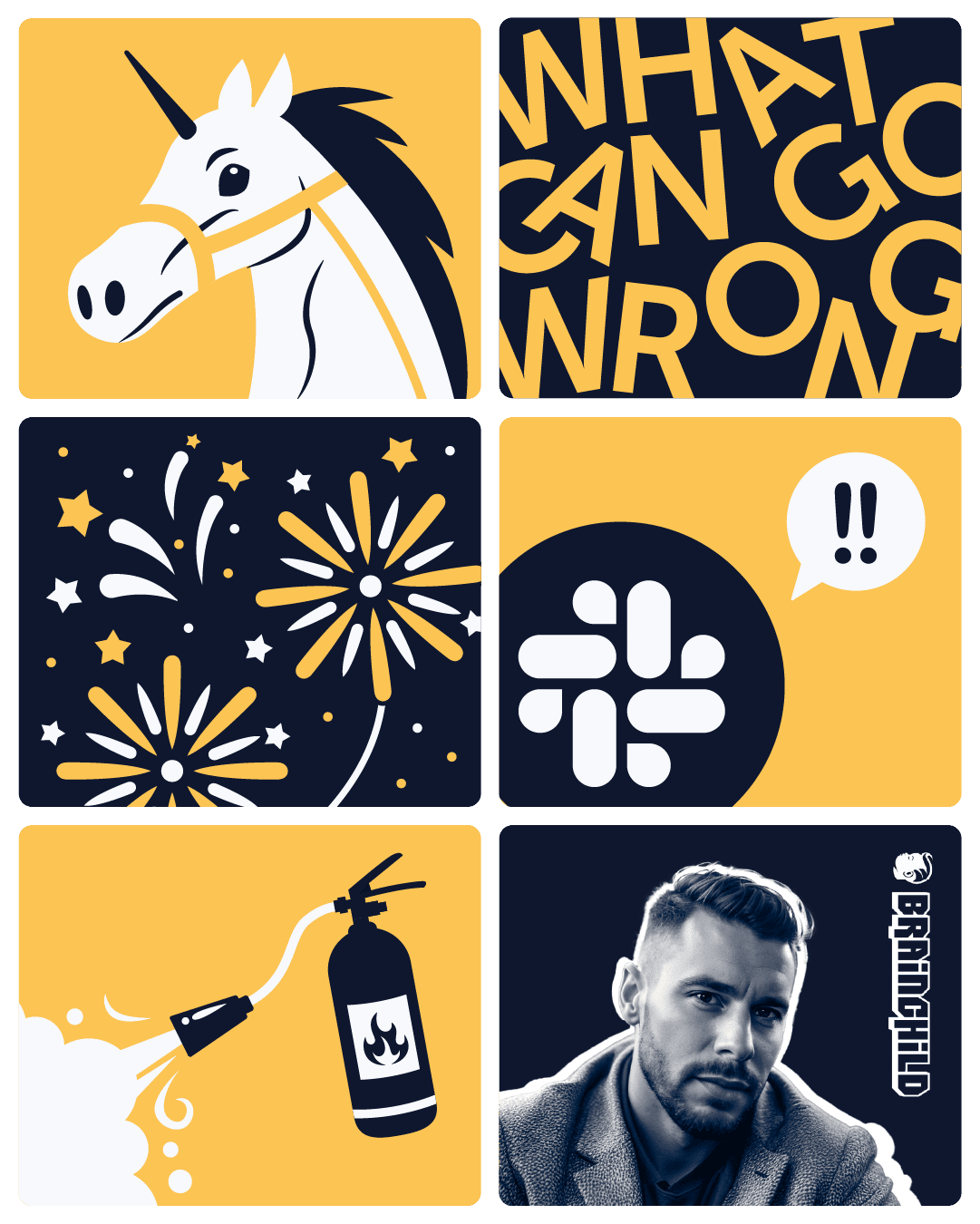
What Could Possibly Go Wrong?
Picture this: You’re a marketer, and you just landed the holy grail of thought leadership—a partnership with the Elon Musk of your industry (except this one doesn’t tweet about cryptocurrency at 3 AM… usually).
We’ll call him “Jack”–a titan of tech, a sultan of SaaS, a prophet of profit margins. This guy could post a picture of his breakfast and accidentally start three unicorn startups.
Our co-branded content series was so hot it needed its own fire extinguisher. Engagement rates were through the roof. Our lead magnet turned into an actual magnet. Even our competitors were hate-sharing our posts, which, let’s be honest, is the B2B equivalent of going viral.
I was already practicing my humble-brag for the next marketing conference. “Oh, this little campaign? It just tripled our pipeline, no biggie.”
Then, faster than you can say “purgatory,” it all went to hell.
Midway through our campaign, Jack decided to do a live-streamed AMA. Perfect, we thought. What could possibly go wrong?
Everything. Everything could go wrong.
It started innocently enough. He shared his morning routine (apparently, unicorn tears are great in coffee), his favorite productivity hacks (time travel was mentioned), and then… the panic ensued:
“What’s your take on the future of AI in SaaS?”
Now, keep in mind, our product was AI-adjacent.
Jack cleared his throat and dropped this wisdom bomb: “AI in SaaS? It’s like putting racing stripes on a horse. Sure, it looks cool, but at the end of the day, you’re still just dealing with a horse.”
You could almost hear the collective gasp of every SaaS marketer watching. Our Slack channel erupted like a popcorn machine filled with firecrackers.
Damage control mode engaged.
We had two choices: distance ourselves faster than a politician from a scandal, or double down harder than a blackjack player with rent due.
As we scrambled to spin this “unique perspective” (read: potential career suicide), I learned a valuable lesson:
Influencers are like fireworks. Exciting, attention-grabbing, and occasionally, they blow up in your face.
Always, always have a crisis management plan. And maybe a time machine.
Because in B2B SaaS, sometimes the real thought leadership is knowing when to keep your thoughts to yourself.
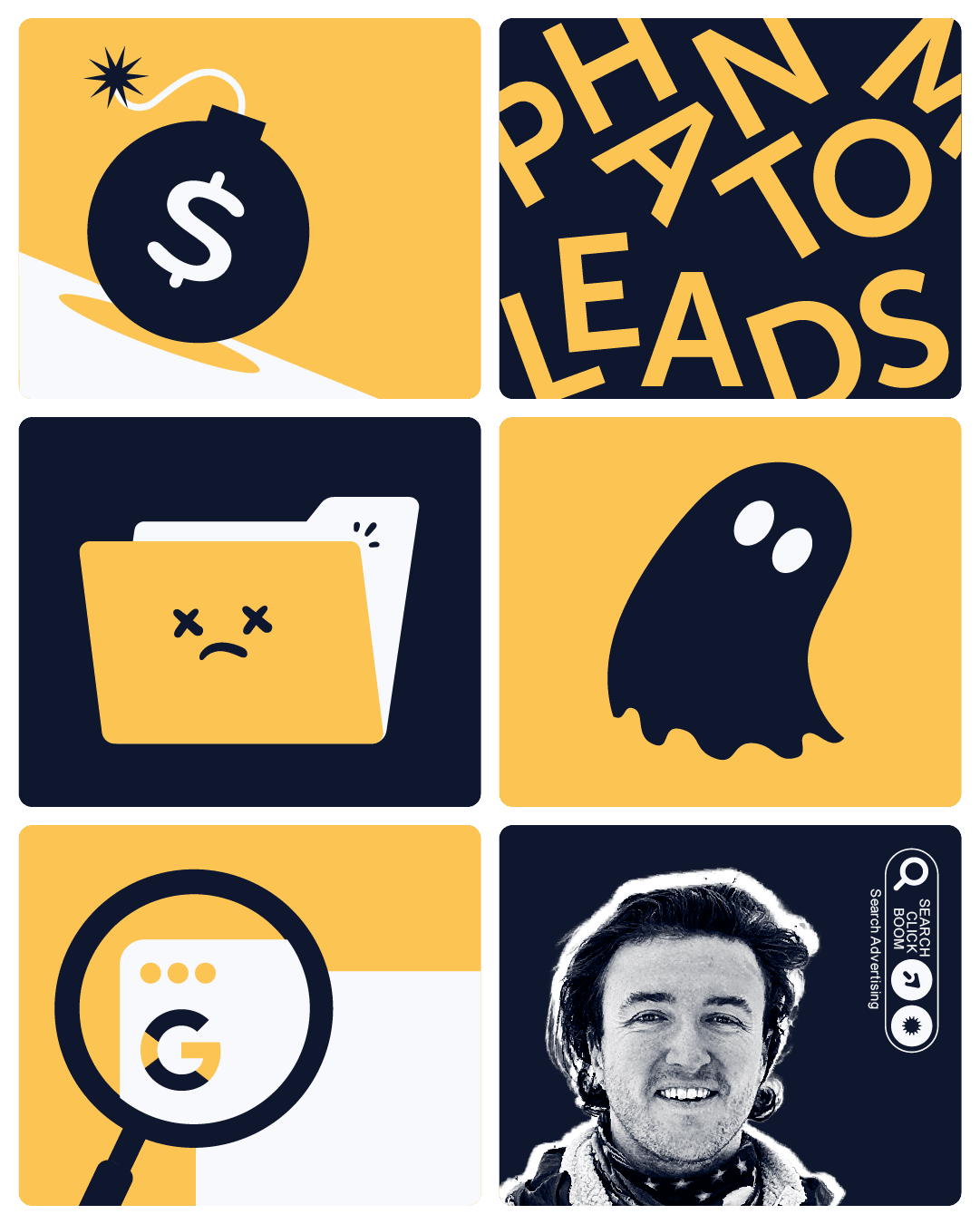
The Case of the Phantom Leads
Picture this: A small B2B SaaS working really hard on paid search — pouring money into campaigns, tweaking every detail, and actually getting what marketers dream of: leads.
At some point, they wanted to understand how many customers came from the 900 leads they got through the search ads over the previous year. So, they asked me to audit their Google Ads account.
I dive in, and what do I find? They had spent $72k in that period. OK. Their cost per conversion was around $80 — sounds reasonable for B2B, right?
But as I dug deeper into those leads and their quality, the team and I realized something shocking: they hadn’t been targeting the right users at all.
And that $72k? It had resulted in… precisely zero customers. That’s right. Not one. Safe to say they were pissed.
Look, attribution can be messy, I know, but the bottom line is this: you have to understand how your marketing efforts affect actual results—revenue.
The sooner you get a clear picture, the better, because no one wants to blow tens of thousands of dollars on leads that vanish into thin air.
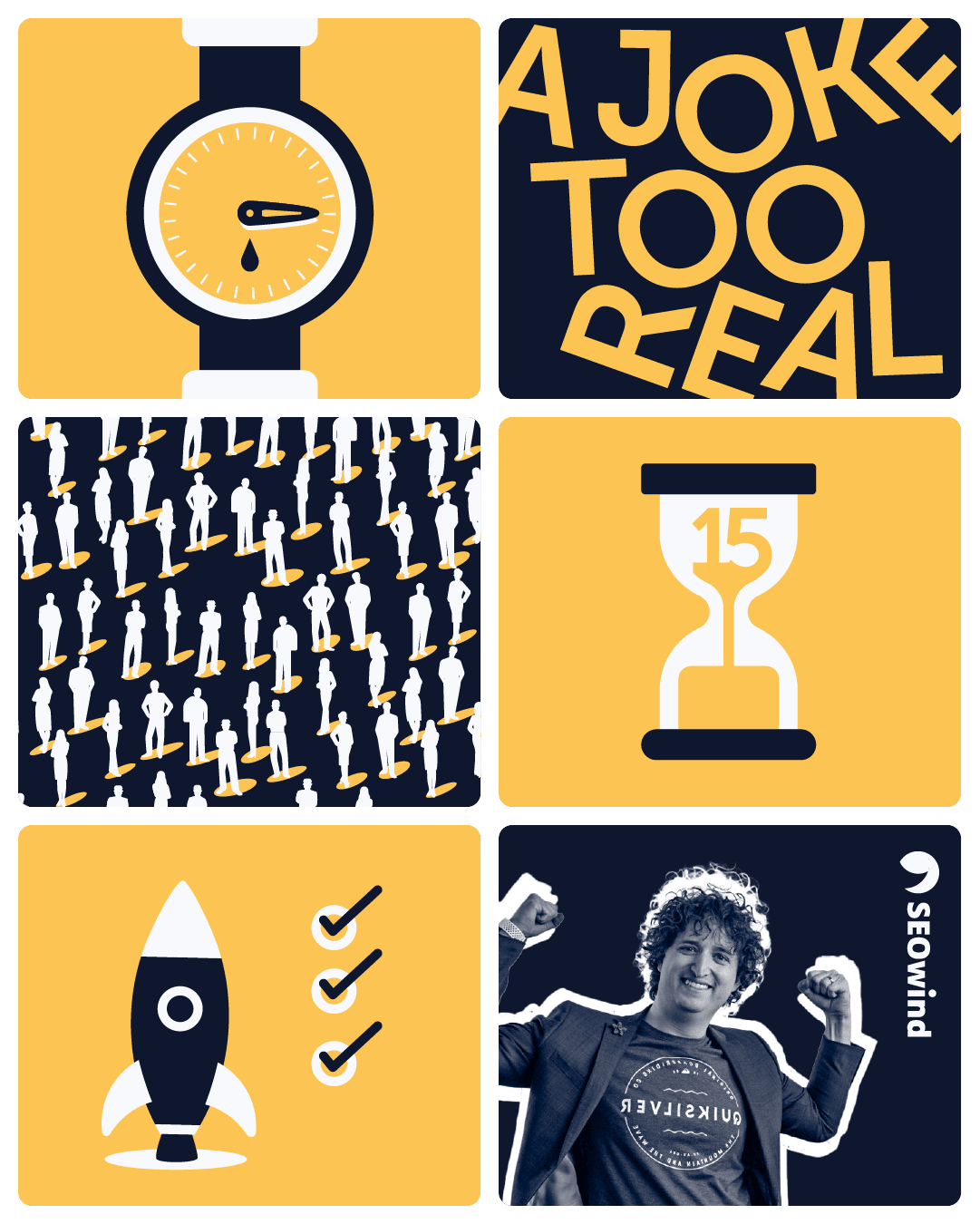
The Joke That Got Too Real
Creating your first SaaS startup from scratch means running headfirst into a ton of first-time challenges. Here’s a story about one of those, ahem, fun little surprises.
As part of the sales and marketing team, I used to joke that my job was to bring in so many users that the product would strain under the pressure, while the dev team’s job was to keep it from crashing. Well, one day, that joke got a little too real.
I had just closed a few big deals with new customers—huge accounts, not your average users. These folks were about to push our system to its absolute limits, with hundreds of people all logging in at once. Just to be safe, I checked in with the dev team to make sure we could handle the load. “Yep, we’re good!” they said. So, feeling confident, I pressed ahead.
Then the day arrived. The usage spiked, and before long, I started hearing some… nervous murmurs around the office. It turned out that the load was way higher than we’d anticipated.
Let’s just say the dev team had a very intense 15 minutes figuring out how to keep the whole thing from falling apart. Meanwhile, I was in the hot seat, keeping our new customers calm and reassured while we scrambled behind the scenes.
Luckily, the team jumped on it fast, and we resolved the issue before it could spiral out of control. After that brief, heart-pounding moment, everything ran smoothly. It was a close call, but we pulled through, and it’s a lesson I’ll never forget.
No matter how confident you are, you always need contingency plans for the unexpected. After that, we made sure to run tougher stress tests before launching anything new and had better scaling solutions ready. It’s all about staying one step ahead and planning for surprises.
P.S. And yes, I still firmly believe that marketing’s job is to push the system to its limits and see just what it can really handle. 😉

Where Are The Leads?
If a SaaS business wants to scale, chances are, they are growing their sales teams. More salespeople mean more revenue, right? Or so they think. But more salespeople also ask for more leads. We need more leads! Give us more leads! And as a content marketing leader, that turned into my personal horror.
Every year, there’s quite a bit of seasonality in the sales cycles. At the start of the year, our marketing plans were made, but after just a few months, when we were less than halfway through with the execution, the questions about generating more leads started piling up.
“Where are the leads?”—they kept demanding. And since the sales team has quite some authority across the entire organization, that puts plenty of pressure on the marketing department.
– Where are the leads?
– We’ve just started the campaign, be patient.
– We need more leads!
– It doesn’t work like that: Becoming a qualified lead is a journey, it doesn’t happen right after a campaign starts.
Since then, “Where are the leads” is a question I just can’t stand anymore. Why? Because you need to understand what a lead is and what it takes to become one. Simply launching another whitepaper is not going to bring in the right results. People who download information are not necessarily interested in buying from you. So, why should a salesperson call these people after downloading it?
The answer is—they shouldn’t! This person isn’t a lead yet!
I’ve heard “Where are the leads?” far too many times, and I still hear it occasionally. The worst part? You can’t just throw a quick fix at it. Because soon after, you’ll be hit with: “The quality of these leads is horrible.”
My learning? As a marketer, you need to work together with sales to define what a lead is and what stages it goes through. And while you’re at it, you have to stick to a plan that builds real potential, not just short-term numbers. The most successful marketing programs are a mix of proven playbooks and small, strategic experiments. That way, you’re creating long-term results, instead of chasing quick MQLs that never convert into real opportunities.
And maybe, just maybe, you’ll stop hearing the heart-wrenching wail: “Where are the leads?”

The Process Nightmare
Well, everybody’s sharing their nightmares from the past, but I want to open up about my current nightmare. It’s the procurement process.
The deal is sealed with the champion and the leadership. It was a long process (took 3 months), a lot of loops to jump through, including testing some pieces of data in the platform.
We’re good to go 🚀 Yay!
But wait: you’ll have to meet our privacy team, then the procurement team, and then finance.
OK, it’s a significant deal, should not be that bad: we’re SOC2 compliant, GDPR compliant, have a Security portal, and whatnot. This should take 2-3 weeks—and we’re good.
Well, 2 months in—we’re still jumping privacy loops, including having to re-explain the solution and what was sold to the legal team.
Somebody, wake me up, please!
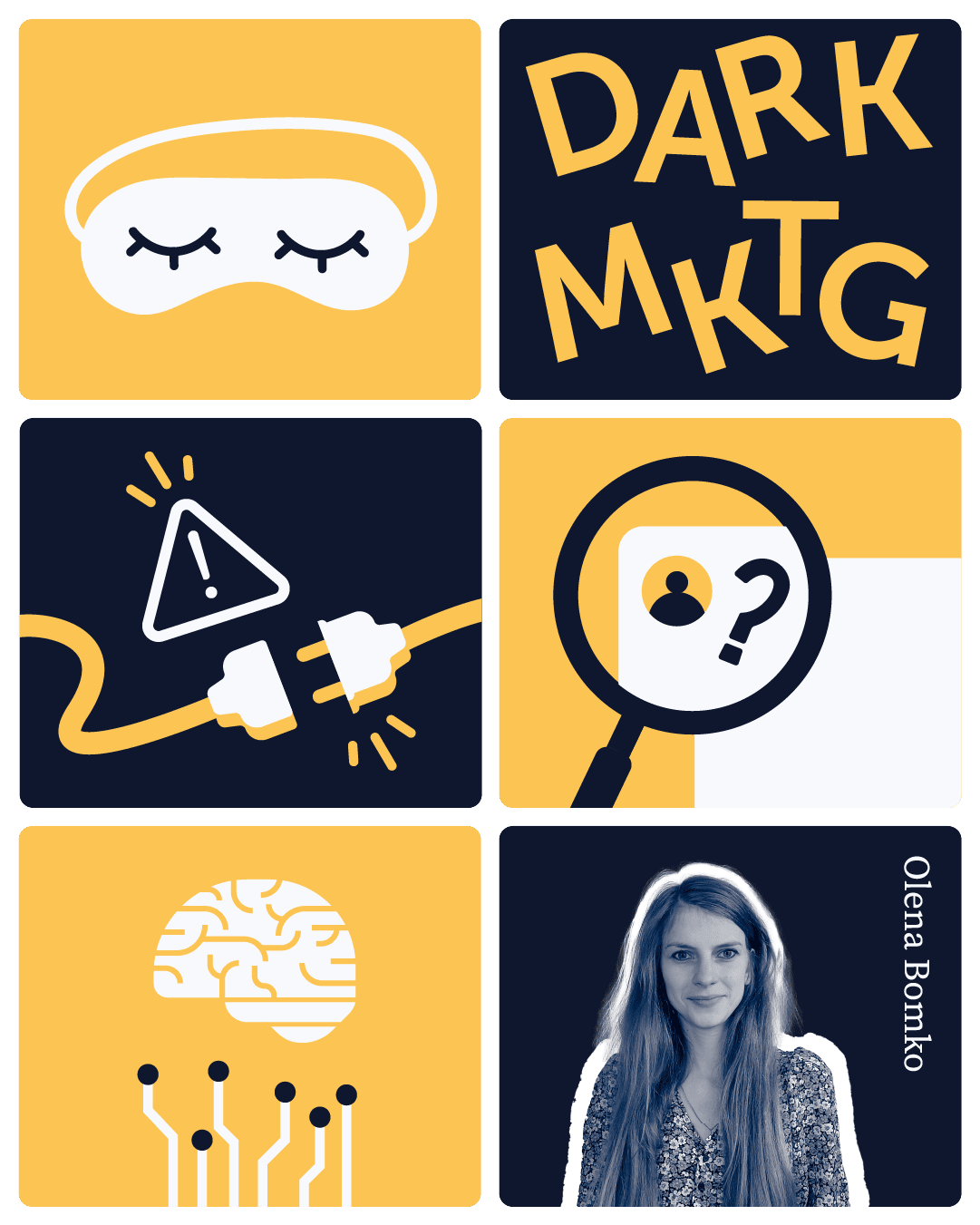
Marketing in the Dark
Once upon a time, I worked as a fractional product marketer in a sales-led cybersecurity SaaS startup. And they had a standard cybersecurity website—as you’d imagine: crammed with buzzwords, the word “AI” screamed at you from every corner of the homepage, while the stock photos stared at you with their soulless gazes.
As any good product marketer would, I started with research. During this phase, I interviewed their head of sales, who proudly showed me a sleek, crystal-clear sales deck. Customers loved it. I loved it.
Naturally, when talking to their CMO about the website copy (and that’s what product marketing consultants sometimes get hired for), I suggested using the info from the sales deck. After a brief, yet awkward moment of silence, he responded: “I’ve never seen our sales deck.”
That was the moment the puzzle pieces fell into place. I suddenly understood why their website looked the way it did. And a few other things became clear too. Do you think this CMO ever talked to their customers? Nope! And as a marketer, that scares me.
How can a marketer do their job if they don’t know the basics? It’s impossible to do good marketing if you:
- Don’t understand how the product works,
- Don’t collaborate with your go-to-market teams,
- Don’t do customer research,
- Don’t understand the market or competition.
And don’t just take it from me. Take it from Eugene Schwartz, one of the greatest copywriters who’s ever lived:
“Copywriting is the simplest of all possible jobs. Lazy ears produce bad ads. Here’s what I’ve discovered about sharpening mine:
- Sit down with the owner of the product and pump the hell out of him.
- Talk to his customers. Do it in person or on paper. See if they agree with him. If they don’t, find out why.
- Listen to his competitors. They often tell you more about the opportunities they’re missing in their ads than the opportunities they’re seeing and therefore seizing.
You see? People constantly ask me why I haven’t burned myself out by now… how I can write three or four fresh ads each week without going crazy.
The answer is simple: I don’t write them. I listen to them. And you can too.”
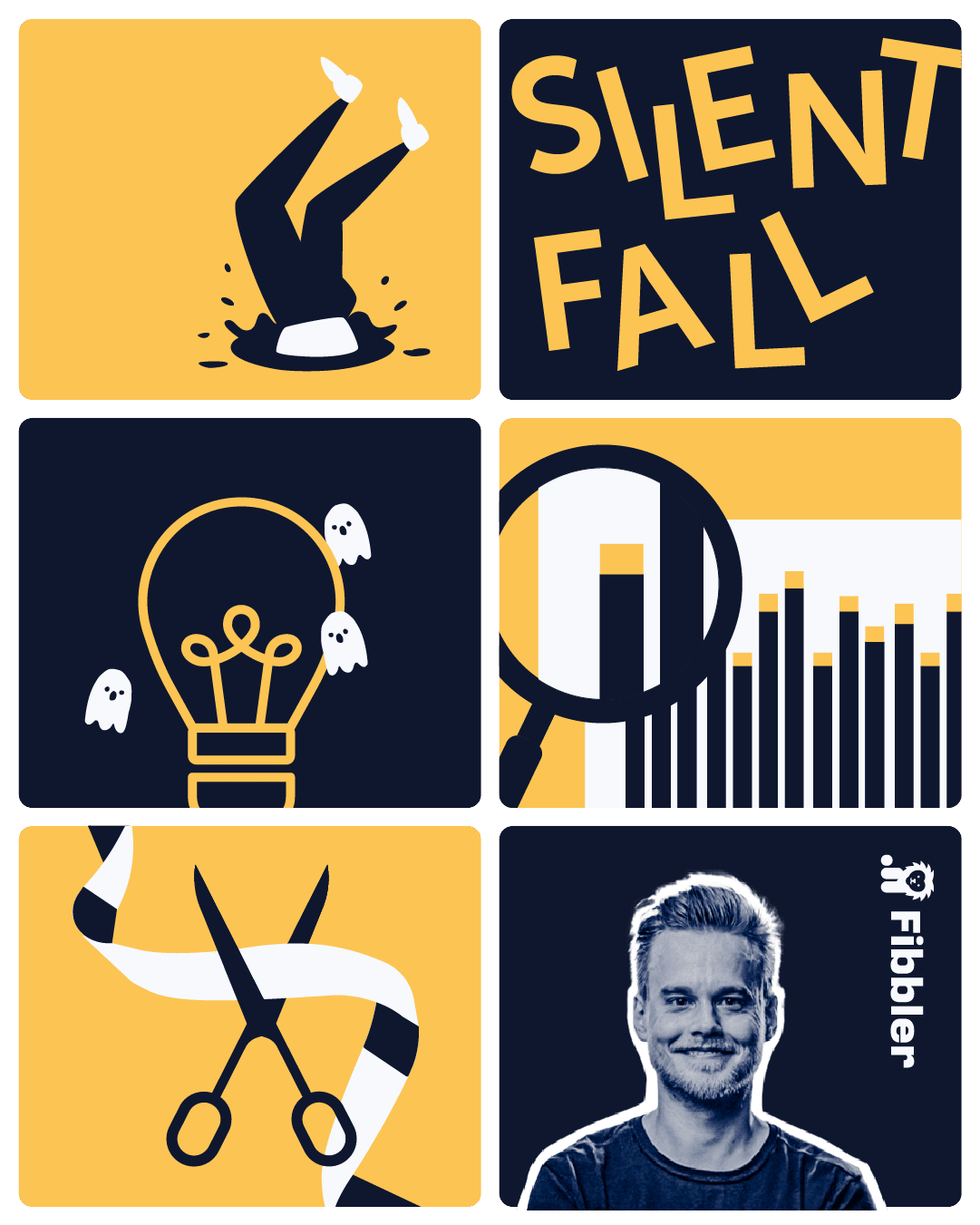
The Silent Fall and the End of Ads
Let me fire up my time machine and briefly take you to the peaceful years of pre-recession marketing. Back then, I was in digital marketing, and LinkedIn Ads campaigns were running like a well-oiled machine.
Every quarter, the business was hitting new highs. The sales team was closing deals left and right, and the CEO was happily approving budgets without a second glance.
We all knew the playbook: invest heavily in LinkedIn Ads, build that brand presence, and let the leads roll in. It was almost too easy.
Then the recession hit.
Suddenly, the free-flowing budgets turned into drips. Sales cycles stretched from weeks to months, and the once-eager B2B buyers became elusive.
As the company tightened its belt, the questions started rolling in. The kind of questions you dread as a marketer, the ones that keep you up at night.
The CEO called me into his office one afternoon, the worry lines on his face deeper than I’d ever seen. He leaned forward, hands clasped, and asked the question I’d been avoiding: “What exactly are we getting from these LinkedIn campaigns?”
My stomach dropped. Sure, we’d been spending millions on LinkedIn Ads, but in the good times, nobody cared to ask about attribution. The business was booming, so who cared where the leads were coming from? But now, every dollar was under scrutiny, and I was suddenly being asked to justify a budget line that looked more like a black hole than a gold mine.
So, I did what any good marketer would do: I dug into the data. Hours turned into days as I sifted through reports, metrics, and analytics dashboards. Finally, the cold, hard truth emerged—only 10 leads had come directly from clicking on our LinkedIn Ads in the last quarter. And the kicker? Not a single one had turned into revenue.
My heart sank. There was no way to sugarcoat this. I had to face the music and present the findings to the CEO. The decision was swift and brutal: we were cutting off LinkedIn Ads entirely.
At first, everything seemed fine. We trimmed the fat, shifted budgets, and tightened our belts. But then, something strange happened. A few months after we killed the campaigns, the company’s results started to nosedive. Website traffic plummeted. Inbound leads dried up. Even our brand search volume—a metric that had been steadily climbing for years—started to tank.
It didn’t take long to connect the dots. People might not have been clicking on our LinkedIn Ads, but they were definitely seeing them. The ads were doing their job in the background, building brand awareness, driving interest, and keeping us top of mind for when decision-makers were ready to buy.
Without those ads, it was like we’d turned off the lights in the middle of a crowded room. Nobody was paying attention to us anymore.
The lesson was painful but clear: not everything that counts can be counted. Attribution is messy, imperfect, and often misleading. Sometimes, the real value of a marketing campaign isn’t in the clicks or the direct leads, but in the brand presence it builds, the trust it fosters, and the long game it plays.
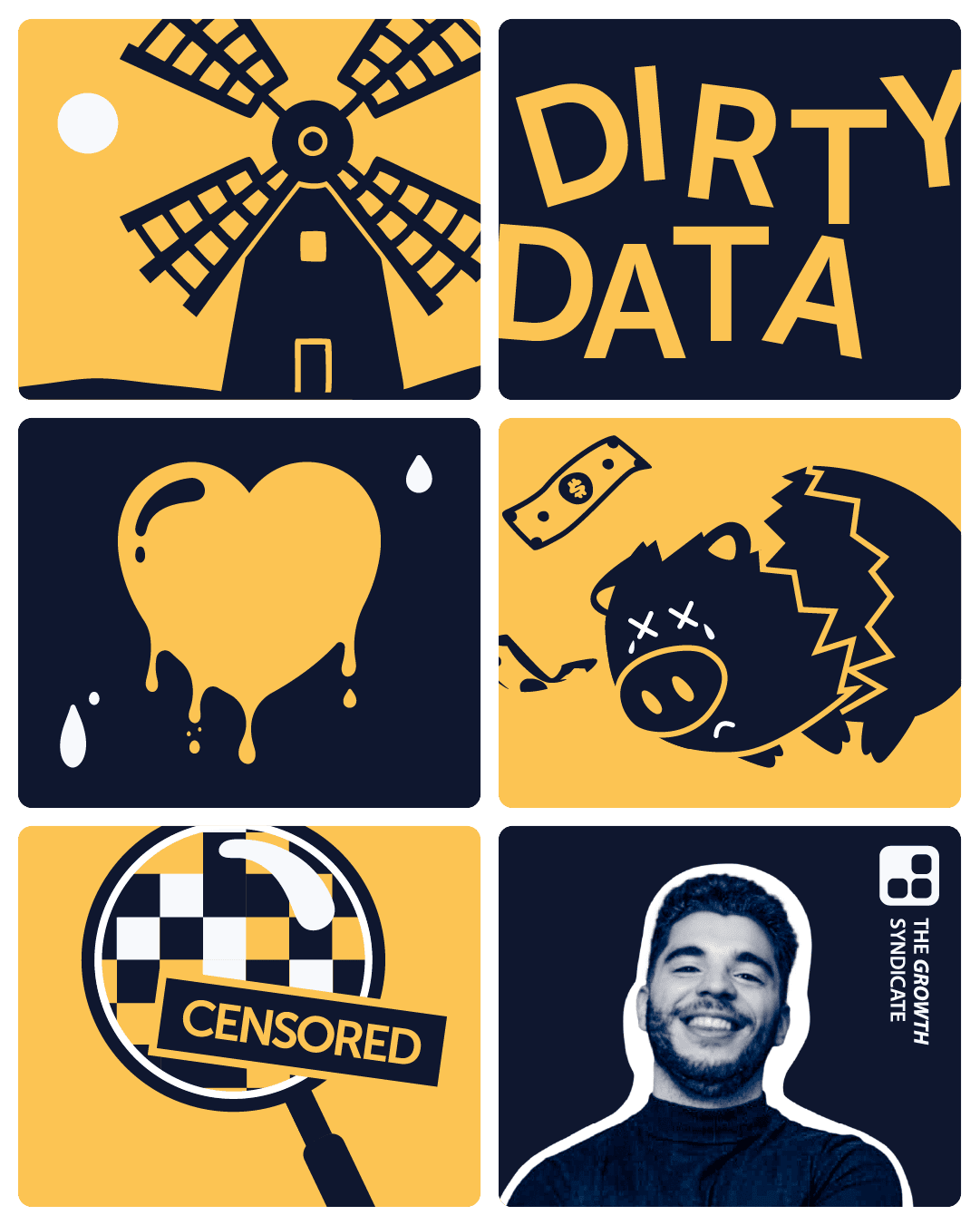
The Dirty Data
I’ve built a reputation for myself in Amsterdam and beyond—I, Georgi Furnadzhiev, am a seasoned growth marketer, known for turning startups into profitable growth machines. One of my latest endeavors promised to be my most impressive one so far—a clever benchmarking campaign targeting competitors’ clients.
I poured my heart, blood, and tears into the project, perfecting every detail of the copy and campaign visuals. I knew it was bound for success.
However, that campaign became my personal horror story. As it launched, leads began to pour in, but something felt off. Days turned into a week, and the metrics told a haunting story. Conversion rates plummeted, and the leads remained unresponsive.
What could I do? I scrutinized the data, and my heart sank. The lists from the sales intelligence platform that I had been given for my campaign targeting were riddled with dirty data. Nonexistent names, defunct companies, and wildly inaccurate demographics filled the spreadsheets I had relied on.
In my quest for perfection, I polished every little detail of the campaign, yet I overlooked the quality of data. Apollo, despite its claims of comprehensive data coverage and verification processes, had provided me with a flawed dataset.
The once-promising campaign had morphed into a nightmare, and the budget that had once felt like a ticket to success now loomed over me like a specter. Each wasted euro still echoes in my mind, reminding me of my oversight. There would be no happy ending for this story: the campaign, destined for success, haunts me to this day and reminds me of the perils of relying on flawed data.
The budget is gone, and the only thing that it helped generate (except for this story) is a lesson I learned the hard way: sometimes, the true horror lies not in the failures we face, but in the data we trust.
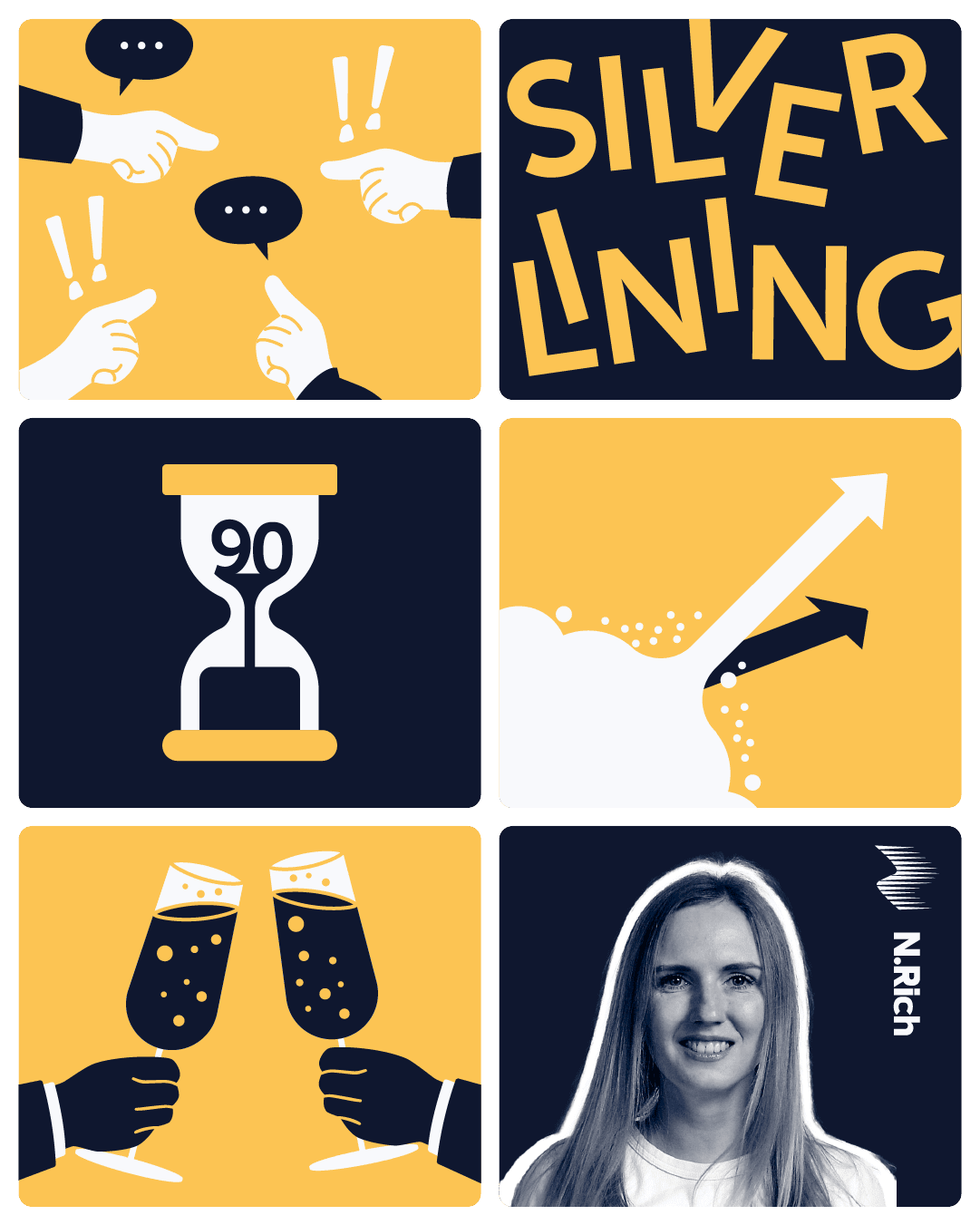
The Campaign That Could Have Lived
This could have been my best campaign. We came up with the theme, created a set of nice landing pages, ran paid ads, and even found an old article on the blog with decent traffic that we revamped according to the new messaging.
The results were mind-blowing: the revamped article started ranking on Google like crazy. At some point, it was generating over 20,000 clicks monthly. We had hundreds of conversions associated with this article and the campaign in general.
The thing was… it all happened outside the attribution window. Our practice was to look at the campaign data in 90 days after launch and then report on its success or failure.
Our data over the first 90 days had shown it was a failure.
Then, a month later, traffic started growing. In six months after the campaign launch, the campaign was steadily generating dozens of thousands of visits per month. All organic, no paid. I tried to bring it up, showing the spike in traffic and new users to the management and the analytics team—all I got was “Okay, curious, but the campaign is over already.“
There’s a silver lining to it though—I have some very good numbers to put up on my LinkedIn bio. Who cares if it happened 90 or 180 days after—it happened, and that’s the most important thing, isn’t it?
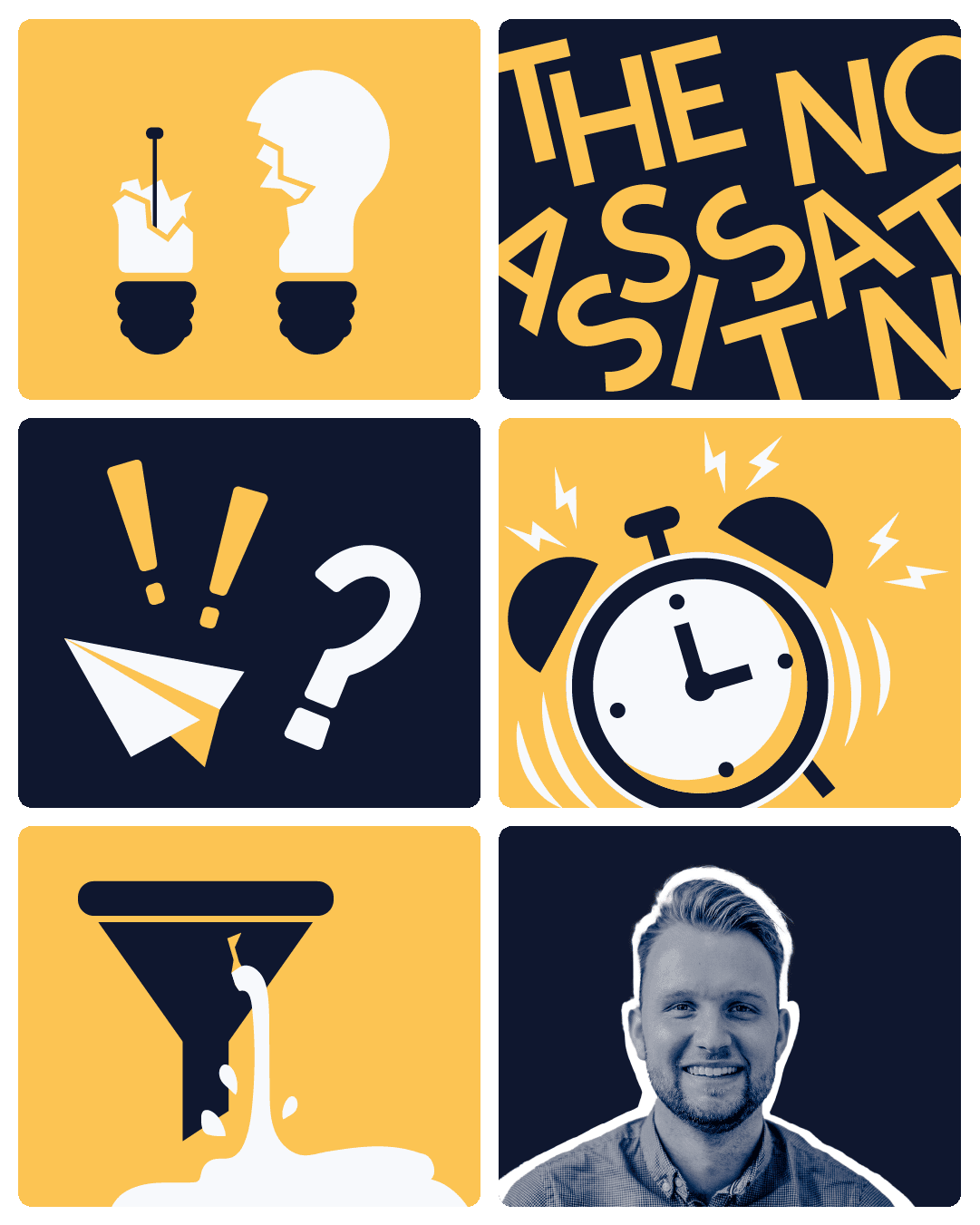
The AI Marketing Assistant That Wasn’t
I was a fractional CMO at a rising star of a company in the marketing technology SaaS space. Our team was always on the lookout for the next big innovation. Our platform helped marketers streamline their campaigns, but we knew AI was the game-changer everyone was waiting for.
During a creative brainstorming session, we thought we understood what we should do. We decided to create “AudienceGenius” – an AI-powered feature that promised to predict consumer behavior and automate hyper-personalized content creation across channels.
Excited by the potential, a small group of us—myself, a product manager, and our lead data scientist—decided to flesh out the concept. We designed dashboard mockups, drafted compelling landing pages, and wrote persuasive email copy. The plan was to use these materials to pitch the idea to our CEO and secure resources for development.
All our work was carefully stored in a shared folder labeled “AudienceGenius Concept – DRAFT.” We thought we’d been meticulous in marking everything as preliminary. How wrong we were.
It was an ordinary Thursday when all hell broke loose. At 10:05 AM, my phone began buzzing incessantly with notifications. Slack messages, emails, texts – all going berserk. With growing horror, I opened my inbox to find our “AudienceGenius announcement” email had been sent to our entire customer base.
The email enthusiastically proclaimed, “Revolutionize Your Marketing with AudienceGenius AI – Now Live in CampaignCraft!” It included links to our concept landing pages and promised to “boost engagement rates by 500% starting today.”
My heart sank. This feature was nothing more than an idea on a whiteboard. It didn’t exist. How on earth did this happen?
As we scrambled to unravel the mystery, the alarming truth came to light:
- Our newly hired growth marketer, eager to make a splash, had stumbled upon the AudienceGenius folder.
- Misinterpreting the situation and overlooking the “DRAFT” label, they assumed it was a scheduled release they needed to execute.
- Using our own marketing automation platform, they loaded the draft content and hit “Send” to all users.
The fallout was immediate and intense:
- Our customer support channels were swamped with marketers demanding access to the non-existent AudienceGenius features.
- Social media exploded, initially with excitement, then with confusion as people realized AudienceGenius wasn’t actually available.
- Our CEO, completely blindsided, called an emergency all-hands meeting demanding answers.
- Competitors swiftly capitalized on the chaos, painting us as unreliable and overhyping our AI capabilities.
In a panic-driven decision, our CEO declared we had to deliver AudienceGenius – and fast. Our development and data science teams, caught entirely off-guard, were given an impossible four-week deadline to turn this concept into reality.
What followed was a nightmare of even more epic proportions. Developers and data scientists worked around the clock, fueled by energy drinks and sheer panic. The result was a half-baked “AudienceGenius” that was more random than intelligent. It made wildly inaccurate audience predictions and generated nonsensical content that would make even the most avant-garde marketers cringe.
The long-term consequences were severe:
- We lost 8% of our customers within three months, many citing the AudienceGenius debacle as a breach of trust.
- The ongoing pressure to improve the rushed feature drained resources from our core product development, setting us back months on our actual roadmap.
- Team morale hit an all-time low, leading to some resignations, including some of our most talented developers.
In the aftermath, we were forced to completely overhaul our internal communications and marketing protocols. We implemented a stringent multi-step review process for any customer-facing materials and improved our data access controls and labeling systems.
If there was a silver lining, it was that this catastrophe taught us invaluable lessons about the dangers of overhyping AI capabilities, the importance of clear communication channels, and the risks of rushing products to market without proper testing and ethical considerations.
Today, in martech circles, “Pulling an AudienceGenius” has become shorthand for promising AI-driven marketing miracles without the tech to back it up. It serves as a stark reminder of the need for integrity and realism in an industry often driven by the next shiny object.
The excitement about new AI features in SaaS is great, but it needs to go hand in hand with rigorous processes, clear communication, and ethical considerations. Because sometimes, the most expensive campaign you’ll ever run is the one for a product that doesn’t exist—especially when it promises to automate the nuanced art of understanding and engaging audiences.
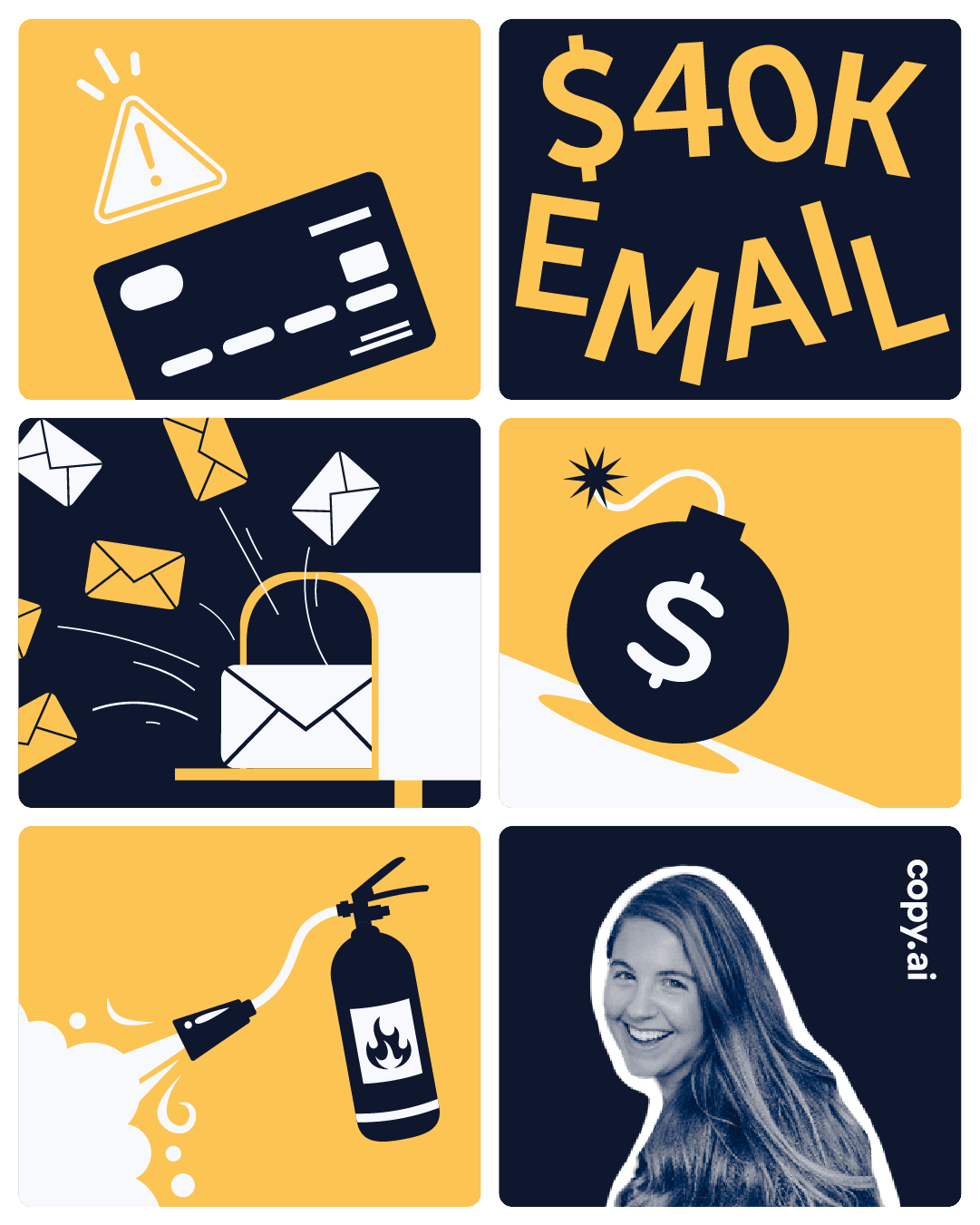
The $40k Email Nightmare
It was a surprisingly bright Fall day – the air crisp, the leaves just beginning to turn. Nathan, my coworker and I were cheerfully chatting about an upcoming webinar campaign.
As marketers—more specifically, content and lifecycle marketers—much of our conversation revolved around the best way to leverage email as a promotional channel for the campaign. We wanted to be bold, and laugh in the face of typical email conventions.
Now, the funny thing is, as a Head of Lifecycle, you’d think I’d be all for proper segmentation—but as marketers who love to fail fast, Nathan and I sometimes choose to live dangerously.
So, we created a cleverly crafted and wittily written email campaign that would impress even the most fickle of writers.
All that was left to do was launch it.
With the thrill of two giddy marketers who truly thought we had struck gold with our campaign, we decided to broaden our segmentation. “What would happen if we widened the audience? Say, to one million recipients?”
I looked at the audience data, shrugged my shoulders, and said, “Never try, never know!”
What I probably should have said is, “F**k around and find out.” Because find out, we did.
Unbeknownst to us, we had a people-reach limit from our email service provider.
So, imagine our surprise when we receive messages from the CEO, the founder, and other leaders in our company, letting us know of a $40k charge for exceeding said limit. $40k. For an email campaign. Ouch!
We panicked.
With sweat rolling down our backs, tears gathering in our eyes, heart rates pumping like an old-school Bugs Bunny clip, we knew we had not only f***ed around, but were about to really find out just how much we could mess up.
Hastily written, panic-induced Slack messages were sent; apology notes begging and pleading for mercy were sent off, and a tear-stained email to our email service provider rep was dispatched.
And you know what happened?
Drumroll… The world didn’t end. We didn’t lose our jobs. Our audience wasn’t upset.
- Our leadership was totally understanding, and knew we recognized our mistake.
- Our phenomenal email service provider rep helped us swiftly deal with the overcharge, waiving his magic wand and making it disappear.
- We immediately paused the campaign, optimized, and carefully QA’d.
And we were able to compile a robust process for email sends that would help guide others in leveraging email thoughtfully.
The email campaign performed well—exceeding our expectations, and somehow managing not to totally implode our spam rate 😂 But that isn’t the point.
The real lesson learned? It’s not taking risks, failing fast, or wanting to try new things that will hold you back—it’s missing the opportunity to learn from your mistakes. There’s no growth without failing.
Oh, and it never hurts to be humbled—even people who know what they’re doing can make mistakes.
